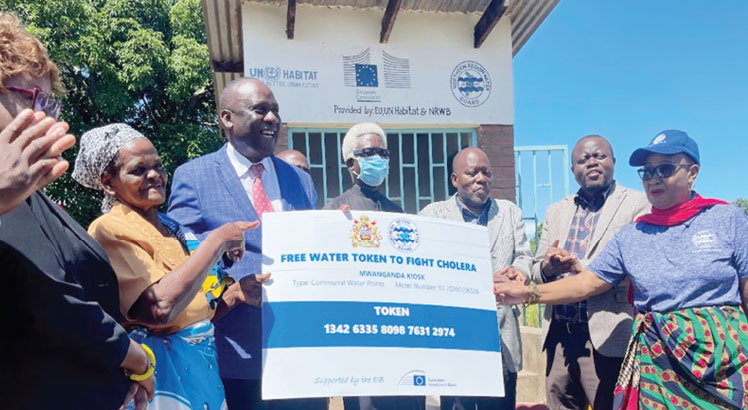As fish vanish, scientists weigh in
Fish prices in Malawi keep rising amid falling stocks, a setback to diets and incomes of many.
The fishing sector employs over 500 000 Malawians and affects livelihoods of over two million, mostly in the lakeshore communities.
According to the 2021 Malawi Government Annual Economic Report, the sector contributes at least four percent to the gross domestic product and about 70 percent of animal protein in Malawians’ diets.
This exposes the importance of fish to the economy and human health.
However, the Fisheries Department is worried about declining fish population, especially the flagship chambo, due to overfishing, declining water levels and habitat degradation.

In 2019, the Country Environment Assessment by the World Bank showed that the annual chambo catches had fallen from 30 000 metric tonnes (MT) to as as low as 2 000 metric tonnes since the 1970s.
Fisheries scientists from Malawi and Zimbabwe are implementing a joint project to improve fish production, especially the treasured tilapia. The K22.5 million initiative, called Genetic Improvement of Coptodon Rendalli and Oreochromis mossambicus. is funded by the National Commission for Science and Technology with support from the Science Granting Council’s Initiative (SGCI). SGCI has been funding research work and innovations in many southern Africa Countries.
The researchers say the project focuses on improving the growth and yields of tilapia through selective breeding and scientific sex reversal method.
The project’s principal investigator Professor Wales Singini from Mzuzu University, says the proposal for funding came in response to the country’s struggles to come up with better tilapia for fish farming.
“The research project will help improve a specific tilapia rendalli variety,” he says. “We developed interest in this and we decided to see whether we can do some genetic improvements.”
The local researchers wrote the research proposal in partnership with the University of Zimbabwe which is doing a similar study on Oreochromis Mossambicus.
Local experiments involve tilapia from Lake Chiuta, Lake Malawi’s Tukombo area in Nkhata Bay and privately owned ponds in Mzuzu City, explains Singini.
Between October and December 2021, the fish produced the first newborn population in the study.
Singini explains: “Tilapia rendalli is an important specie for fish farmers in the Northern Region. Most of them use this tilapia for their fish farming and they like it so much.”
The study seeks to increase the size and value of the tilapia fish in the two countries.
In Malawi, these trials are underway at the Mzuzu Fish Farm belonging to the Fisheries Department.
The first generation is planned to be grown for six months and the best fish will be selected for yet another reproduction cycle to come up with improved tilapia fingerlings.
“We want to follow all the procedures to produce up to the second generation where the project will stop. The Fisheries Department has already expressed interest to carry over the project up to sixth generation cycle of reproduction as a minimum requirement,” Singini says.
After the first breeding cycle, the researchers are confident to produce the best fish tilapia for fish farmers nationwide.
From August when the breeding period in Malawi begins, the first generation will be produced and with it, the new Tilapia offsprings will be taken to farmers for the field experiments to gauge farm-based growth rate.
“We expect that farmers will now have the energy to venture into fish farming because the results will be clear in terms of the fish size and quality. We want the tilapia to grow to more than 300 grammes in six months,” Singini explains.
He adds: “If the project can get 500g in a fish production cycle, that will be much better because the current fish size in six months is less than 300g.”
In Malawi, the research project involves specialists in genetic molecular biology and biotechnology in fisheries at Lilongwe University of Agriculture and Natural Resources (Luanar), the Malawi University of Science and Technology (Must) and the Fisheries Department
The collaborators include University of Zimbabwe’s Professor Tamuka Nhiwatiwa, Must’s Dr Petros Chigwechokha, Luanar’s Professor Daud Kassamu and the Department of Fisheries’ Dr Hastings Zidana and David Mbamba as well as WorldFish’s Dr Lucius Kanyumba.
Director of fisheries Friday Njaya says the project is a game-changer when it comes to developing the fisheries sector.
“In terms of promoting aquaculture, this could be very positive for our farmers because they will be getting seed which is fast-growing, thereby cutting on the investment costs,” he said.
According to Dalgety’s paper published in December 2020, between 1990 and 2018, the cost of tilapia fish in Malawi jumped 25 times from $0.12 (25 tambala at the time) in 1990 to at least $3 (about K2 600) in 2018.
The Government’s Annual Economic Report shows that Malawi’s fish consumption per capita has dropped from 12.65 kg per person per year in 2018 to 9.5kg.
This falls below the 15kg minimum recommended by the World Health Organisation.
Alex Chidaya, a fish trader at Lilongwe Main Market, said although fish prices are rising, the market is still struggling to meet the surging demand.
“Although we get some profits from the sales, some fish types, including chambo, are in low supply and customers are now resorting to imported fish from neighbouring countries such as Zambia and Mozambique,” he said.






One Comment